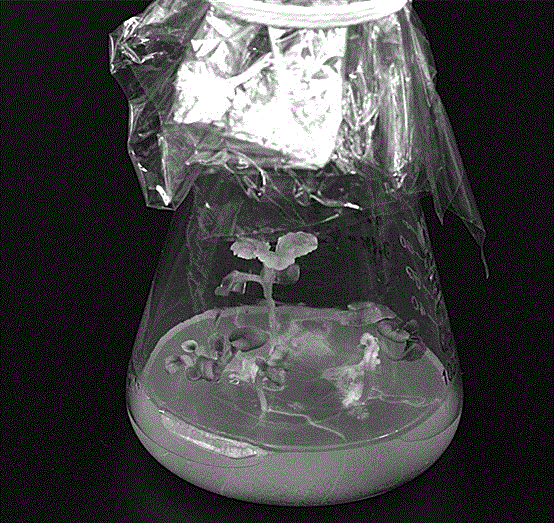A method of promoting napa cabbage microspore embryogeny and direct production of plantlets
A technology for culturing microspores and microspores, which is applied in the fields of botanical equipment and methods, horticultural methods, plant regeneration, etc., can solve the problems of labor-intensive, low embryoid seedling rate, low embryogenesis rate, etc., and achieves simple operation. easy effect
- Summary
- Abstract
- Description
- Claims
- Application Information
AI Technical Summary
Problems solved by technology
Method used
Image
Examples
Embodiment Construction
[0019] The methods described in the following examples are conventional methods unless otherwise specified.
[0020] The reagents described in the following examples can be obtained from commercial sources unless otherwise specified.
[0021] The medium used in the following examples is the same as the B5, NLN, and MS medium in the summary of the invention.
[0022] The cabbage microspore culture method main process of the present invention comprises:
[0023] 1. Free microspore culture process
[0024] Select the flower buds whose microspore development period of Chinese cabbage is from the uninucleate marginal stage to the early binucleate stage. At this time, the characteristics of the flower buds are that the ratio of the length of the petals to the length of the anthers is between 1 / 2 and 3 / 4. After washing the flower buds with running water for 2 to 3 times , put the flower buds into a sterilized 100mL beaker, sterilize the surface with 75% ethanol solution for 30s, 0....
PUM
 Login to View More
Login to View More Abstract
Description
Claims
Application Information
 Login to View More
Login to View More - Generate Ideas
- Intellectual Property
- Life Sciences
- Materials
- Tech Scout
- Unparalleled Data Quality
- Higher Quality Content
- 60% Fewer Hallucinations
Browse by: Latest US Patents, China's latest patents, Technical Efficacy Thesaurus, Application Domain, Technology Topic, Popular Technical Reports.
© 2025 PatSnap. All rights reserved.Legal|Privacy policy|Modern Slavery Act Transparency Statement|Sitemap|About US| Contact US: help@patsnap.com



